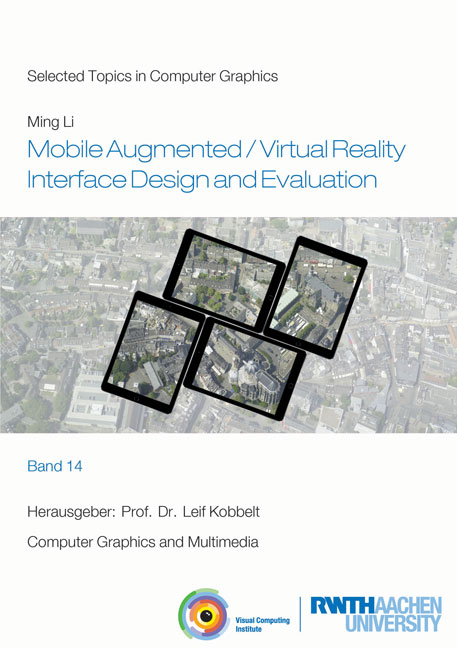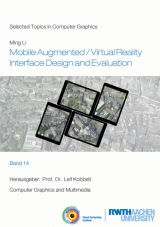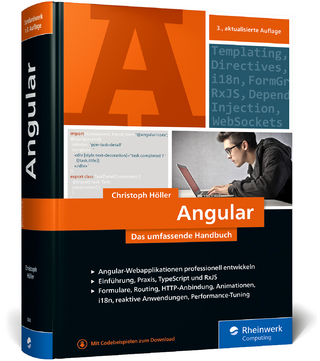Mobile Augmented/Virtual Reality Interface Design and Evaluation
Seiten
- Keine Verlagsinformationen verfügbar
- Artikel merken
Nowadays, we are surrounded by various visual data. In the meantime, mobile personal devices are ubiquitously available. Following these trends, a new challenge arises: How can we fit huge amount (and categories) of visual data to resource limited mobile devices while still achieving good user experience? More specifically, we need new approaches to deliver various functionality originally developed for powerful desktop computers to resource-constrained mobile platforms. In addition, the visual data on mobile devices need to be presented in a way that maximize the usability and user acceptance.
There is no straightforward solution to this question in practice. However, our opportunities come from three fundamental aspects: mobile device, visual data and user factors. First, the advancement of mobile device makes it possible to process more sophisticated visual data. Second, increasing quantity and quality of visual data desire novel approaches to visualize and interact with the data. Third, various user factors in different application scenarios request modification and evaluation of mobile interfaces to maximize the usability and user acceptance.
In this thesis we are going to explore fundamental techniques for the design and evaluation of mobile augmented and virtual reality interfaces. To achieve this, we concentrate on three aspects. First, we introduce original technical contributions that focus on fundamental components of mobile AR/VR interfaces (e.g., transmission, visualization, tracking and interaction). Second, we apply emerging techniques to create novel mobile interfaces. Third, we propose design guidelines based on results of formal user studies.
There is no straightforward solution to this question in practice. However, our opportunities come from three fundamental aspects: mobile device, visual data and user factors. First, the advancement of mobile device makes it possible to process more sophisticated visual data. Second, increasing quantity and quality of visual data desire novel approaches to visualize and interact with the data. Third, various user factors in different application scenarios request modification and evaluation of mobile interfaces to maximize the usability and user acceptance.
In this thesis we are going to explore fundamental techniques for the design and evaluation of mobile augmented and virtual reality interfaces. To achieve this, we concentrate on three aspects. First, we introduce original technical contributions that focus on fundamental components of mobile AR/VR interfaces (e.g., transmission, visualization, tracking and interaction). Second, we apply emerging techniques to create novel mobile interfaces. Third, we propose design guidelines based on results of formal user studies.
| Erscheinungsdatum | 29.02.2016 |
|---|---|
| Reihe/Serie | Selected Topics in Computer Graphics ; 14 |
| Verlagsort | Aachen |
| Sprache | englisch |
| Maße | 148 x 210 mm |
| Gewicht | 285 g |
| Einbandart | geklebt |
| Themenwelt | Informatik ► Software Entwicklung ► Mobile- / App-Entwicklung |
| Schlagworte | Human Factor • mobile device • Visualization |
| ISBN-10 | 3-8440-4258-X / 384404258X |
| ISBN-13 | 978-3-8440-4258-0 / 9783844042580 |
| Zustand | Neuware |
| Haben Sie eine Frage zum Produkt? |
Mehr entdecken
aus dem Bereich
aus dem Bereich
Das große Handbuch zum JavaScript-Framework
Buch | Hardcover (2022)
Rheinwerk (Verlag)
39,90 €
Eine umfassende Einführung
Buch | Softcover (2021)
De Gruyter Oldenbourg (Verlag)
44,95 €




